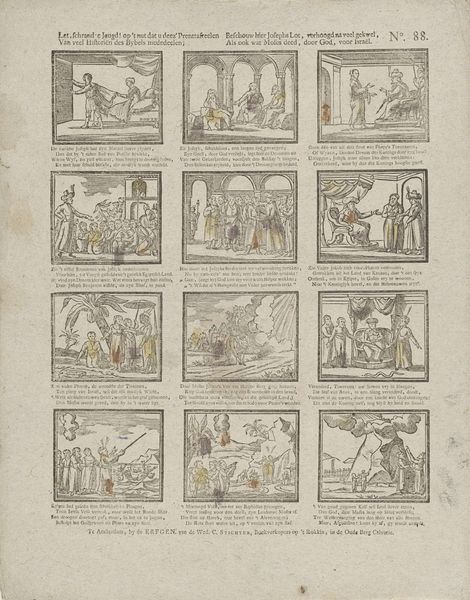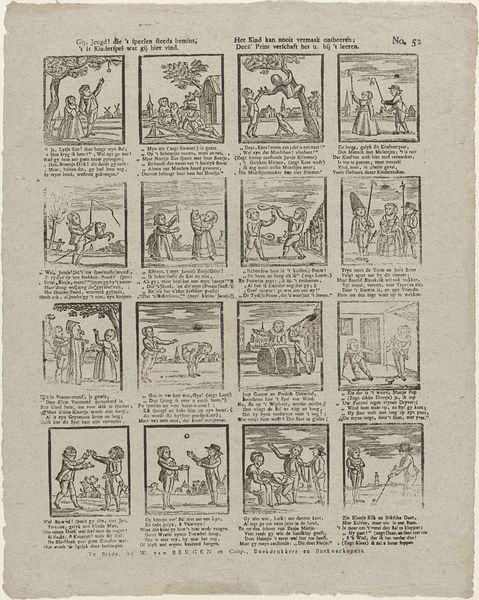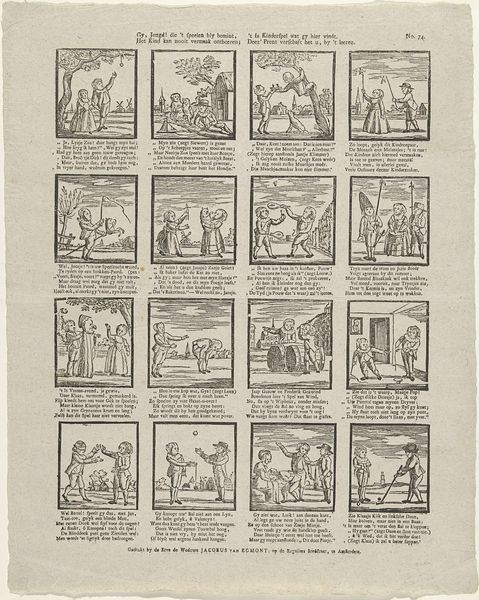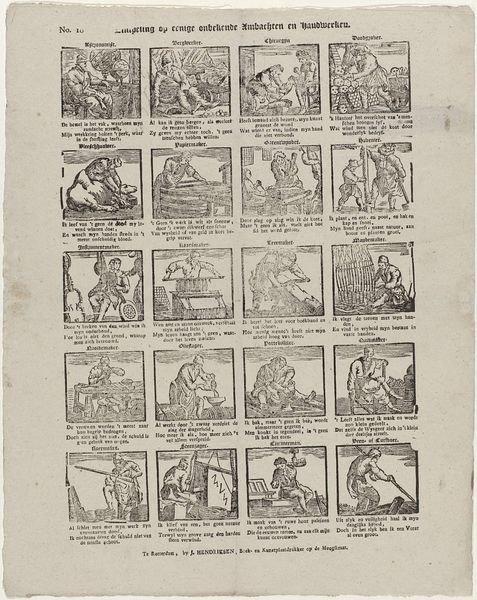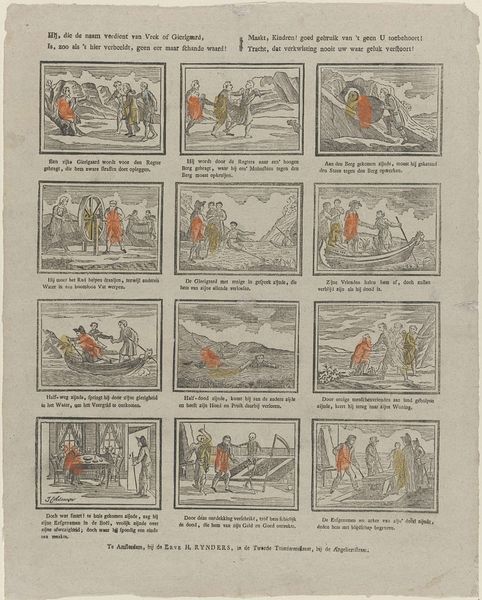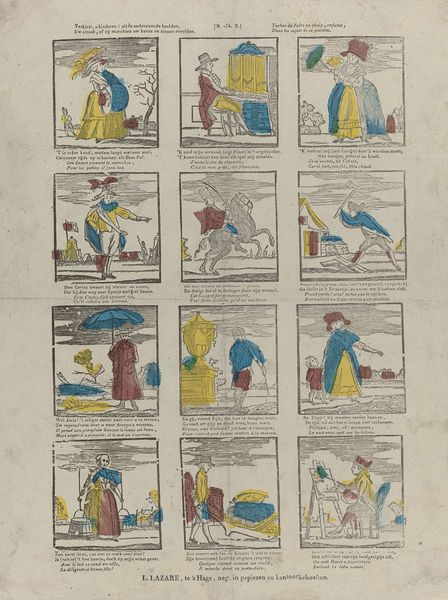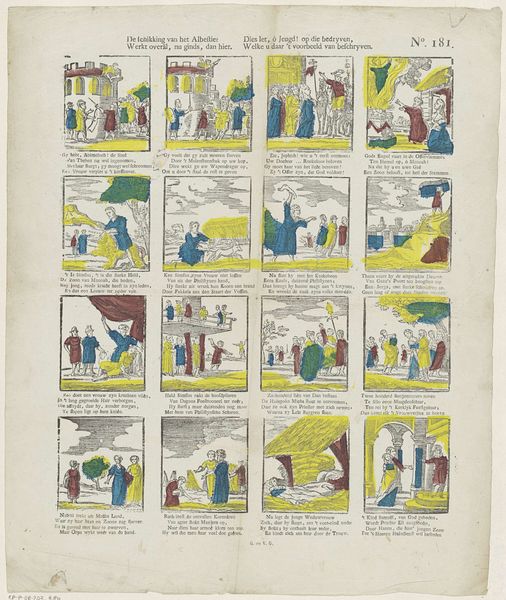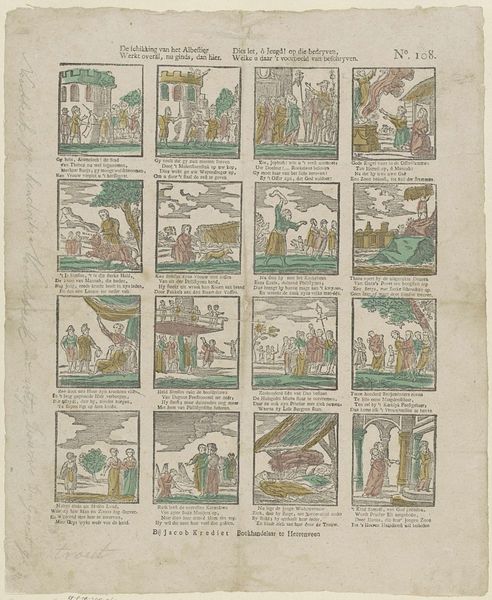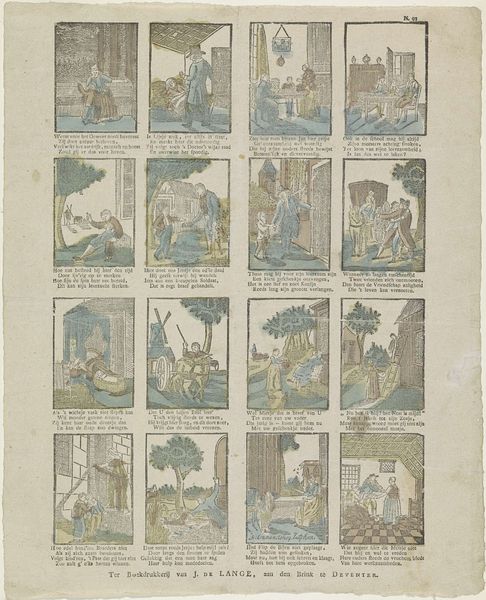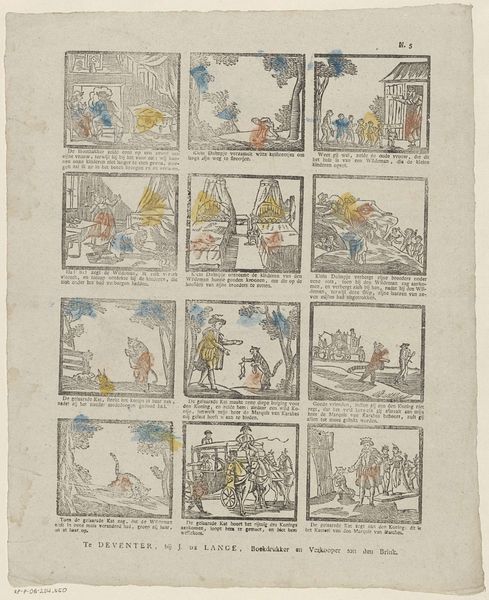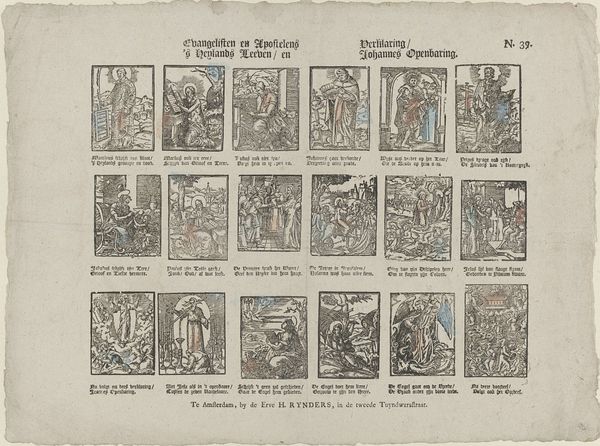
De schikking van het Albestier / Werkt overäl, nu ginds, dan hier. / Dies let, ô jeugd! op die bedryven, / Welke u daar 't voorbeeld van beschryven 1806 - 1830
0:00
0:00
jrobyn
Rijksmuseum
print, etching
#
comic strip sketch
#
aged paper
#
quirky sketch
#
narrative-art
# print
#
etching
#
sketch book
#
personal sketchbook
#
sketchwork
#
thumbnail sketching
#
comic
#
sketchbook drawing
#
genre-painting
#
history-painting
#
storyboard and sketchbook work
#
sketchbook art
Dimensions: height 407 mm, width 328 mm
Copyright: Rijks Museum: Open Domain
Editor: Here we have "De schikking van het Albestier" from sometime between 1806 and 1830, etched by J. Robyn. It looks like a page from a children's book or maybe even a religious tract, printed on aged paper, depicting scenes within framed panels. It gives off an odd vibe, almost like an early form of propaganda... What strikes you when you look at it? Curator: I’m immediately drawn to the symbolism embedded within these seemingly simple panels. Consider the tower recurring in several frames, and then observe the figure extending their arms holding either a branch or scepter, seemingly preaching, perhaps in defiance. Notice also how crowds appear consistently: they might convey ideas of governance and cultural continuity, representing generations absorbing specific values, passed on throughout time. Editor: You see all that within the sketches themselves? How do you distinguish “values” from the images? Curator: Think of symbols like the gates or archways, framing entries and exits; they carry cultural memory, a representation of historical awareness being delivered in the etchings. Or perhaps that individual in the fourth image extending his arm toward another—consider them the “speaker” of wisdom in conversation with the younger child figure: a sort of knowledge dissemination! Editor: So you see these almost cartoonish figures and architecture as components of larger historical meaning? It's more than just illustrations? Curator: Precisely. The artist acts as a vessel, transferring cultural ethos through accessible imagery and recurring symbolism. Think of how this type of serialised imagery could reinforce behavioural learning, which in turn could create an entire common value system of viewers back in the 19th century. What do you think that value system may be? Editor: Fascinating. I hadn’t considered the broader implications of accessible imagery as a historical propagator of symbolic meaning and common behaviour learning until now. Thanks for elucidating. Curator: Likewise, your point about early forms of propaganda opens exciting possibilities to further research into visual narratives from that period.
Comments
No comments
Be the first to comment and join the conversation on the ultimate creative platform.
